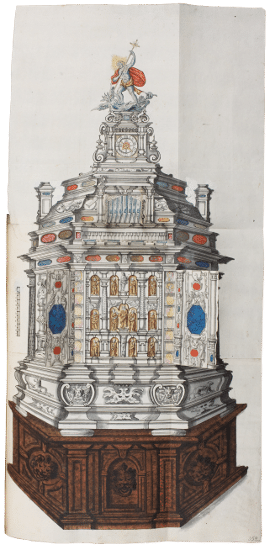Not only did he devise, commission and procure large numbers of artificial objects for cabinets of curiosities, he also advised collectors and wrote in his travelogues about the collections he had visited. As an Augsburg businessman he was at the centre of intensive exchanges of art objects and ideas about art. This is reflected both in the aforementioned travel accounts and in a great deal of his business correspondence as well as in his exchanges of letters with aristocratic clients about politics and art.
The largest complete holdings of Hainhofer’s written legacy are in the Herzog August Bibliothek, including all his travel accounts, two Stammbücher (family registers), volumes containing copies of his business correspondence, large parts of his correspondence with Duke August the Younger (1579–1666), descriptions of his cabinets of curiosities and his lute books. These holdings are extremely important for anybody researching cultural and political activities at the German courts before and during the Thirty Years’ War.
Based on a comprehensive analysis of the Wolfenbüttel sources, the project set out to investigate Hainhofer’s cultural activities in the social, economic, confessional and political environment in which he moved. A further objective was to carry out a comparative examination of the role of political art agents in the period from 1550 to 1650 and thus to classify Hainhofer’s activities in a context where the transfer of art was a form of political transfer. The intention was to arrive at a more precise identification of the functions and self-image of agents in the early modern era than had hitherto been possible.
The project’s findings were published as a monograph: Philipp Hainhofer: Handeln mit Kunst und Politik, Kunstwissenschaftliche Studien 199 (Berlin/Munich, 2020).
PURL: http://diglib.hab.de/?link=052
Funding: Deutsche Forschungsgemeinschaft (German Research Foundation, DFG)
Duration: 2011 – February 2016
Project participant: Dr Michael Wenzel (team member)

